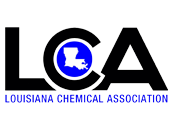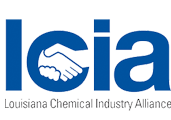
Author: Kelli Connerly, Regulatory Specialist
For more than a few obvious reasons, “safety culture” is an industry-wide, trending topic. For most owner facilities and contractors alike, safety compliance is a cornerstone of their organization, but oftentimes leaders are left contemplating whether their OSHA-compliant written programs and training are enough to target zero injuries. It is increasingly evident the answer to that question is a resounding “no.” Practitioners are seeking effective means to institute comprehensive management systems to forge a positive safety culture. Unfortunately, the safety department alone cannot create a safety culture. It takes an organization-wide commitment to safety to achieve the desired results.
The elusive safety culture is a subjective topic, so how does an organization make sure it is doing it right? Development of user-friendly OSHA-compliant written programs is only the first step. Safety programs must engage and empower employees so they are aware of the risks surrounding them and they feel confident identifying and reporting issues without fear of consequence; moreover, they must embrace their duty to do so. Employee engagement is one of the most critical components of building a solid safety culture. This reaches beyond employee training and becomes second nature in daily activities. Instituting an employee safety committee is an effective way of promoting employee engagement and pushing the ownership of safety from the safety department into the organization. Clearly, in order for any type of program to be successful in an organization, management must be committed to the concept. Leading by example and demonstrating to employees “safety first” isn’t just lip service, coupled with an alignment of safety targets and organization-wide objectives, are foundational pieces of building a safety culture. To build a world-class safety culture, the principles must be ingrained in every component of work, not just treated as an extra step to be completed before or after a job task.
Integration of safety into an organization requires strategic planning and a commitment to continuous improvement. Guided by the framework of a management system, implementation takes time and effort and requires consistent monitoring of the measurements set in place to indicate the program’s performance. For example, statistically, hazards should be identified at a ratio of 10:1 compared to near-miss reporting. Likewise, the same incremental increase from near-misses to minor incidents applies, so the following metrics — hazard identification, near-miss and minor incident recorded documentation — should model the 100:10:1 ratio. The bottom line is capturing and analyzing such data and reporting the results back to the organization in a meaningful way takes commitment and resources put toward implementing a safety management system that produces a desirable safety culture.
So, at this point, many people are seeing dollar signs and thinking, “With an unlimited budget, of course you can do all of these things.” However, according to various studies compiled by the National Safety Council, it has been demonstrated $1 invested in injury prevention returns between $2 and $6. That information, coupled with OSHA Safety Pays program analysis demonstrating the cost associated with a single instance of occupational-related hearing loss, requires an increase of $1,176,333 of sales to offset the direct and indirect cost to a company associated with such an injury. Imagine those numbers for a more severe injury or, even worse, a fatality. This information helps to debunk the prevalent misconception safety is strictly a cost to an organization and shifts the conversation to understanding how to get the best return on your safety investment. No safety manager or executive ever puts a price tag on an employee’s health or his or her life, but the reality is occupational injuries and illnesses impact profitability. So can you afford not to invest in safety?
Looking confidently in the rearview mirror at a record of zero injuries is a flawed approach; however, with the right plan in place, a commitment to excellence, and continuous monitoring and improvement, leaders can be confident they are providing their organization with the right tools to foster a culture of safety excellence.
For more information call (225) 644-5332.









